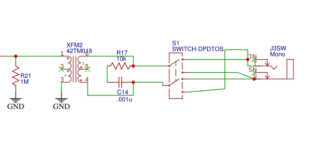Nacht
Member
Theoretically, there is only one ground. In practice though, we have different circuits in our home wiring, which means that if two different grounds from different circuits end up getting connected, they may actually be at slightly different voltages, which will cause interference (noise) because the voltage difference will create a current (this is commonly referred to as ground loop). This is pretty significant if two amps end up sharing the grounds. So when using an ABY splitter, you are lifting the ground of one of the outputs just to break the connection of the ground of the outputs, in order to avoid the grounds on the amps to be connected and thus creating a ground loop and consequently interference (noise). The input ground won’t matter as much, comparatively (although I know ground lift is often use by itself so it must have an effect). That’s why you only need one isolated output. If you have two, you may reduce noise a tiny bit more.
Please take all this with a grain of salt since my knowledge is a bit rusty.
Ah thanks, actualy i did not know the ground loop term meant that 2 different grounds were not at the exact same voltage and creating a current between them = ground loop noise. So that's good to know but... I'm still confused how the isolated ground of out B can work, like where does out B and amp B get's it's ground to make it work? Also when we isolate via a transformer, is that called ground isolation or we really must lift the ground at the output stocket of the aby pedal out B ? Transformer isolation of ground is isolation and lifting (disconnecting the ground at the output stocket) is ground lift?



